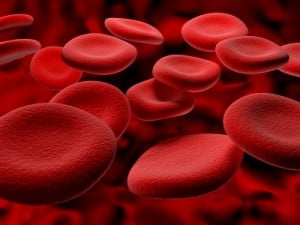
When I teach trauma medicine to young Soldiers, Sailors, Airmen and Marines I typically see a great deal of fear and apprehension in their eyes and their actions. But, by the time I am done, they are transformed into confident lifesavers undaunted by pints of blood… How do I do it?
Overview
Our Circulatory system is nothing more than a series of pipes. These pipes bleed at various rates depending on the type of pipe it is or the size of the pipe. The first thing people have to do is understand that fact. I begin by actually showing them blood vessels and having them touch the vessels.
Capillary Bleeding
Capillary bleeding is rarely a problem unless it is in the face and scalp. The face and scalp bleed like crazy, but the good news is that even in those areas a little direct pressure is all it takes.
I like to find areas rich in capillaries and cut them to show the rate of bleeding. Then I have my students simply stop the bleeding with a little pressure and some gauze as an adjunct. This is a big first step as students realize that bleeding can in fact be stopped very quickly, even if it is only a low-pressure small vessel. The building block approach is key.
Venous Bleeding
I then move on to venous bleeding. I knick a vein and stop the bleeding with a finger and only the weight of my hand. Then I have the students do the same. We start with small veins and move up to large veins. In each advance, students learn to stop bleeding with a finger, then replace the finger with gauze and a pressure dressing. Easy day!
Arterial Bleeding
Finally we move into the least pleasant stuff. Arterial bleeding… Students are always amazed that an artery can spurt 4 feet into the air. However, I show them that the same amount pressure with a single finger is all it takes to stop the bleeding. The exact same principles are used.
Locate the exact site of the bleed, tapenade it with a finger. Replace the finger with an adjunct, apply a pressure dressing, done! When they are confident with extremity wounds I move into the really bad stuff, axillary wounds. Even here I prove to them that if they just get their hand in there they can isolate the bleed, apply the adjunct and then pack the wound to effect a pressure dressing.
By the time they complete this evolution, the fear is gone and I would trust every one of my students to work on me or any of my buddies downrange. That live experience goes a long way!
The next time you are considering medical training for your unit or team, please consider these points. If you are interested in more information regarding this type of training, please feel free to contact me at info@alpin-gruppe.com.
About The Author
Nathanael Morrison was a USAF Special Tactics and Pararescue team leader for 15 years before transferring to the US Army. He has written “the most complete book on military specific training ever published, Military Fitness: A Manual of Special Physical Training.”
He is available to teach or speak on a wide variety of military and special warfare subjects. Visit his web site at www.alpin-gruppe.com